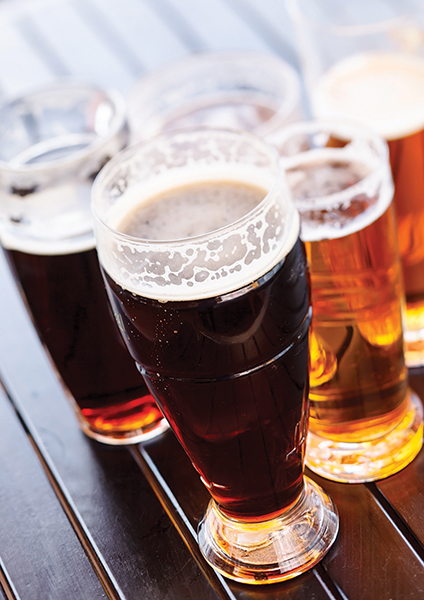
By Jack Kenny
April 23, 2016 marked the 500th anniversary of the German “beer purity” law, known as the Reinheitsgebot, which restricts the ingredients in beer produced in that country. The law has been viewed both with favor and disfavor, the latter especially since the U.S. craft beer trend began to spread abroad.
The law started out in Bavaria back when it was its own duchy in what is now southwestern Germany. It was not promulgated to make beer better, per se, but rather to restrict its production to barley, hops and water so that bakers could have access to wheat and rye. Over the years it has grown into a symbol of national pride as well as restriction. It was, and is, considered the guardian of beer purity in a nation that has been drinking beer for as long as the beverage has been around. It’s also a hindrance to those who would experiment with the ingredients in a brew, and is viewed by many as a relic that should be retired.
The Bavarian rule was made law throughout united Germany in 1906 by edict of Kaiser Wilhelm II. Over the years some tweaks were permitted, such as the right to make hefeweizen using wheat, but still no rice or corn.
In 1987 the European Union’s court of justice threw out the Reinheitsgebot as a protectionist measure, which opened Germany’s borders to beers made in other countries. Still, the Germans kept to the spirit of the law in their own beer production. And in case any brewer decided to wander and add fruit or coffee to the brew, the resulting beverage could not be called beer. And still can’t. The purity law is also part of the nation’s tax code by which it takes a cut of brewery profits.
The German Brewers Association maintains that the law is well supported: It cites a survey that says more than 85 percent of German citizens want to keep it.
The craft beer trend – or craze, depending where you are – is penetrating many foreign countries, including Germany. Brewers today are liberated, and will make a beer with many a variant, including fruits, nuts, spices, and maybe a vegetable or two. They look at the purity law as the antique product of a rigid society. A recent article in Smithsonian magazine mentioned that some German brewers are even ignoring the purity law outright. The story quoted an unnamed brewer: “I just brew what I want right past the law. I call my beers by their style designations and simply leave the world ‘beer’ off the label.”
Still, it is worth noting that the old law prohibits rice, corn, chemicals, enzyme preparations, and GMO raw materials. And that’s not a bad thing at all.
Other people’s beer
Which country exports the most beer? Most people guess Germany, which is in the top 10 beer exporting nations, but it’s not the first. Rare is the person who answers correctly within three tries.
The top beer exporter is Mexico, and we in the U.S. can lay claim to the reason for that position. Our thirst for Mexican beers dominates the export activity of our southern neighbor.
As of 2014, the latest year for accurate figures, according to the International Trade Center, beer exports worldwide were valued at $13.4 billion. Here’s a list of the top 10 and their major markets.
- Portugal, $297 million: Two-thirds of Portugal’s exported beer goes to Angola.
- Ireland, $305.6 million: Nearly half of that beer goes to the United Kingdom.
- Denmark, $343.6 million: The producer of Tuborg and Carlsberg counts Germany as its number one export target.
- France, $468 million: Almost half of the beer brewed in France ends up in Spain.
- USA, $541.8 million: More than half of exported beer goes to Canada and Mexico.
- United Kingdom, $813.5 million: the U.S., Ireland and France are the top export destinations for beer.
- Belgium, $1.4 billion: More than half of the exported beer goes to France, the U.S. and the Netherlands.
- Germany, $1.42 billion: China is one of Germany’s biggest beer customers.
- Netherlands, $2.1 billion: Heineken, anyone?
- Mexico, $2.4 billion.
The Australians and the Canadians consume Mexican beer, but nothing like we do. Of the total export amount, the USA accounts for about $2 billion. That’s a significant piece of change.
Jack Kenny has been writing The Beer Column for The Beverage Journal since 1995. Write to him at thebeercolumn@gmail.com.




